
Zombie Vegetable Takeover: a Review of the Bunnicula Series by James Howe

SPOILER ALERT
This so-called review / trip down memory lane goes into some of my favorite scenes from the books, so treat it like garlic or sunlight to a vampire and stay away in your crypt if you do not wish to be barraged with such nostalgic plot-blowing reverie (both regarding the Bunnicula series and some other things thrown in for added flavor).
So to get on with it…
Anyone who spends a lot of time in this genre will nod and shake their heads in understanding when I say that it often comes up, “how or when did you first get into horror?” I don’t know many in this who haven’t been posed that question at some point or another. Hell, I’ve been on both sides of it myself – we all kind of want to know when any among us went through that initiation and what form it took for them… In response, many will often cite R. L. Stine and Goosebumps, or Stephen King, or Nightmare on Elm Street, Friday the 13th, and so on.
For me, it evolved out of my love for language play and my taste for the odd or for things that appeal to the opposite of expectation. I’ve always gravitated towards things that have a kind of off beat inside-joke humor to them. Puns and wordplay are generally a great addition. Surreal and other weirdness is also always good.
I grew up watching campy B-rated movies with my father. The old Universal Studios Classics like Lon Chaney as The Wolf Man or Bela Lugosi as Dracula. And some more obscure flicks too. His collection numbered in the thousands. My favorite was probably The Beginning of the End because of the final scene where the giant grasshoppers descend upon Chicago. I find it endlessly amusing how this scene plays out, since in filming it, they literally just dumped a bunch of grasshoppers on a photograph of Chicago and of the buildings and then tried to pan away whenever the insects would start to walk across the sky or fly off. This still humors me to this day.
I also loved The Addams Family. The old cartoons, the black and white television series, the movies… I especially loved how the movie directly translated scenes and imagery from the cartoons, with Morticia cutting off the roses to keep the thorns or Gomez asking her if she was unhappy and banishing the sunlight. I kind of saw my dad and my stepmother as Gomez and Morticia, and my stepsister and myself as Pugsley and Wednesday. I came to love it even more when it was revealed that their living room from black and white film was actually mostly pink, because that was even more me, especially as I aged into my love of pink things in decidedly un-girly contexts. The living room fit right in. I lived The Addams Family. It was totally a thing.
Like, seriously, get on with it already…
With that background, another big influence was the Bunnicula series by James Howe, which is the subject of this so-called review. I read these books over and over again. I loved the writing style, how the story was told from the standpoint of the dog Harold, and how Chester the cat was so mortified by the unusual happenings that began when the rabbit came into their lives and how obsessive he got about it all. Harold is all-dog and is rather food motivated, as one might expect – you’d almost think he was a beagle, but no. Still, he tells a compelling tale from the standpoint of a dog being a dog, and that’s pretty amusing in and of itself even without the horror twist.
Book 1: Bunnicula earns 4.0 Cthulus
 (4 / 5)
(4 / 5)
The original Bunnicula is the best book in this series by far. The characters and the story are compelling and the book is very amusingly written. It’s fun, especially if you enjoy wordplay, and offers some good lighthearted comedy that can appeal to readers of all ages. I also enjoyed how all of the animals’ personalities come into play and how Harold explains everything from a dog’s perspective. That point of view is truly rather delightful.
My favorite scene in Bunnicula is still the big standoff between Chester and Harold and the family, where Chester has misinterpreted his reading on vampires and is trying to stake little Bunnicula through the heart with an uncooked raw beef steak that had been left on the counter to thaw. Unsurprisingly Harold, being all-dog, is more concerned with when he would get to eat the wondermous piece of raw meat that was totally going to waste in the endeavor. It is just delightful how this scene plays out and still evokes a chuckle from me even this many years later.
Book 2: Howliday Inn
The second book Howliday Inn was not nearly as good as the first. It’s essentially a murder mystery whodunit with your stereotypical cast of suspicious characters: the jock, the floozy, the heartbroken, the sidekick, the crazy, the weirdos, the clumsy, and the annoying. Everyone has their schtick and they all have a motive. You know the scene – very 1980s. Makes for some decent comedy but limited depth… The end reveal of what happened isn’t implausible but at the same time it doesn’t really feel fulfilling, and the book just does not resonate with the same side-splitting humor as the first.
Book 3: The Celery Stalks at Midnight
The third book The Celery Stalks at Midnight revisits the same themes of the first with a lot of added puns thrown in. It was much better than Howliday Inn, but still not as good as the first Bunnicula. It’s funny to see Chester at it again, fretting over Bunnicula turning the town into vampires somehow, Harold still obsessed with food, and the new member of the family, dachshund puppy Howie, bringing his own unique energy to the mix.
Book 4: Nighty-Nightmare
The fourth book Nighty-Nightmare is kind of a cross between the second and third books. Rather than winding up at a pet hotel, the family goes camping as the basis for this spooky woodsy tale. But the book really isn’t all that suspenseful despite the new creepy characters that have joined the cast. Too much gets lost in Chester’s telling of how Bunnicula came to America. Mostly it just seems that Chester is overreacting and fabricating tales to get Harold and Howie (and their guide Dawg) worked up, and his tale is just not very compelling because the vampires seem like more bumbling idiots. But perhaps that’s just how animals see all humans in this world. Also, the ending was really lackluster in my opinion.
Book 5: The Return to Howliday Inn
I don’t recall reading the fifth book, The Return to Howliday Inn. Honestly, I didn’t like the second book set at Howliday Inn as well so I doubt I’ll seek this one out. Maybe it’s better. Maybe not. I don’t know. Pressing onward…
Book 6: Bunnicula Strikes Again
The sixth book, Bunnicula Strikes Again, was surprisingly good. I liked how Howie the dachshund puppy had gotten into the FleshCrawlers series as a direct riff on GooseBumps, in a sort of weird homage and strange disdain all at once. And this story built upon the first book well, coming full circle to the original plot, characters and setting. In the end, the book pulls for the two characters locked in epic battle, Bunnicula the vampire rabbit and Chester the cat, to somehow overcome their differences after they almost perish together, but this comes across as trying too hard to create a happy ending. I feel that the ending it had been careening toward would have been stronger, wherein both perished together, for all that it would likely be disheartening to the intended audience and would not have resulted in any further books in the series.
Book 7: Bunnicula Meets Edgar Allan Crow
There is a seventh book, Bunnicula Meets Edgar Allan Crow, but I have also not read this one. Honestly, I really kind of wish the series had ended with Bunnicula Strikes Again with the epic battle reaching a different end. But that is just my opinion and I’m not the writer, so here we are. Yeah, yeah, I know… what kind of series review is this that it doesn’t even go into all of the books in the series? But I honestly just missed those two and don’t feel like going back to them, besides which this review is too long already. So I’m leaving them out. If you are a die-hard fan, feel free to leave a comment to say how you felt about the books I skipped (or any of the others for that matter).
Apart from the original Bunnicula, I give the rest of the series 3.0 Cthulus.
 (3 / 5)
(3 / 5)
The others really just don’t hold up to the original book in my opinion. From a kid standpoint, they’re probably a more solid 3.5 but I suspect that depends on the kid. In fairness The Celery Stalks at Midnight and Bunnicula Strikes Again are better, but still aren’t on par with the original tale. Still the series is a decent introduction to horror for a kid who loved language and puns and animals and they are rather fun to read. And, given that they were purportedly written by the dog Harold, with the wonderful introductions by the so-called editor, they definitely all have truly dog-based insight moments which can be very amusing at times.
My child-self really enjoyed these books but in adulthood I’ve come to realize I really only remember the first, and for good reason. The others come across as kind of flat. The characters are all pretty caricatured to maximize humorous effect, and can all come across as a bunch of bumbling idiots at times. The series just doesn’t have the same depth as some of the more modern stories.
In other history, the first book was written by both James Howe and his wife Deborah, who also partnered with him on one other book (not in this series), while the rest were written solely by James. I have later learned that Deborah Howe died of cancer before either of the two books they collaborated on were published, and so she never realized just how popular the Bunnicula series became. I can understand, given the popularity of the first book, why James Howe continued it, and they are fun thematically, but sadly the rest of the series just lacks some of the same spark that the first had. If you only pick up some of the books in this series, definitely read the first Bunnicula, and then perhaps The Celery Stalks at Midnight and Bunnicula Strikes Again – those are by far the strongest and most heartfelt.
You can purchase Bunnicula and/or the box series on Amazon from the links provided above, just remember that, as always, if you do so we will get some $ back. The Dark Lord says shop away…
Book Reviews
A Stellar Debut Novel, We Used To Live Here
Imagine this. You’re home alone, waiting for your partner to return, when you hear a knock on your door. You answer it to see a family of five, bundled up against the cold. The father, a kindly older gentleman, explains that he used to live in this house as a boy. And he would love to show it to his family.
Do not let them in.
The story
Released in June 2024, We Used To Live Here is author Marcus Kliewer’s debut novel. It tells the story of Eve, who just purchased a beautiful house with her partner, Charlie. Their plan is to flip the house and sell it.
One night, while waiting for Charlie to come home, Eve is surprised by a knock at the door. It’s a man named Thomas Faust and his family.
Thomas explains that he grew up in the house and hasn’t been in the area in years. Would Eve let them in so that he can show the home to his children?
Against her better judgment, Eve lets them in. She regrets this almost at once when Thomas’s daughter vanishes somewhere into the house.
What worked
I always appreciate a book that allows you to play along with the mystery. And this book does that better than just about any other I’ve seen.
Pay close attention to the chapters, to the words that aren’t there. To everything about this novel.
This is mostly down to Kliewer. This is ultimately his work of art. But the production value is also fantastic. I don’t want to ruin the multiple mysteries, so I’ll just say this. There are clues in this book that require some specific artistic choices in the page layouts in this book. And I loved that.
If you’d like to experience another horror book review, check out this one.
We Used To Live Here is also the kind of story that makes you question everything right along with the main character, Eve. Eve is a great main character. But she might be an unreliable narrator. She might be experiencing every single horror described, exactly as it’s described. Or, she might be having a psychotic breakdown. Through most of the book, we can’t be sure. And that is so much fun.
Finally, the weather plays a large part in this story. There are several stories in which the weather or the land itself could be considered a character. Even an antagonist. This is certainly one. The winter storm is the thing that traps the family in the house with Eve. It also makes escaping the home difficult. Reading this book during the winter was especially impactful. Most of us know what it feels like to be shut in by a storm. I’ve personally lived through some of those storms that are just referred to by their year, as though they were impactful enough to claim the whole 365 days for themself. And that was with people I liked. Imagine what it would feel like with strangers. It’s a staggering thought and one that we explore in depth in this book.
- Get Out meets Parasite in this eerily haunting debut and Reddit hit—soon to be a Netflix original movie starring Blake Lively—about two homeowners whose lives are turned upside down when the house’s previous residents unexpectedly visit
- As a young, queer couple who flip houses, Charlie and Eve can’t believe the killer deal they’ve just gotten on an old house in a picturesque neighborhood
- As they’re working in the house one day, there’s a knock on the door
Last update on 2025-03-08 / Affiliate links / Images from Amazon Product Advertising API
In the end, We Used To Live Here is a fantastic book. It’s the sort of story that sneaks into your brain and puts down roots. And if this is just the first book we’re getting from Kliewer, I can’t wait to see what else he comes up with.
 (5 / 5)
(5 / 5)
Book Reviews
Exploring real terror with The House of My Mother
As a disclaimer, this is a review of The House of My Mother from a critical perspective. I will not be discussing my opinions of the legal case against Ruby Franke and Jody Hildebrandt. I will be discussing the merits of the book as a work of true crime alone.
In 2015, Ruby Franke started a YouTube channel called 8 Passengers. In August of 2023, Franke and her business associate Jodi Hildebrandt were arrested for, and later plead guilty to, charges of aggravated child abuse. And in January of this year, Shari Franke told her story in The House of My Mother.
The story
The House of My Mother is the true story of Shari Franke, the oldest child of one of the most famous family vlogger families.
As a child, Shari came to the conclusion that her mother didn’t like her. Soon, she began to fear her mother’s anger.
Things got significantly worse when Ruby started their family vlog. All of the families most intimate moments were splashed across the internet for anyone to watch. This became a living nightmare for Shari.
Of course, that was only the start of the family nightmare. Because Ruby was about to meet someone who would reinforce all of the darkest parts of herself.
Eventually Shari manages to escape her home. But her younger siblings were still in her mother’s clutches. She had to save them, and her father, from the monster her mother had become.
What worked
Through the book, Shari only ever mentions the name of one of her siblings, Chad. This is because Chad is the only of her siblings that is an adult at the time of the publication.
There are children involved in this story. Children who’s lives and privacy have already been damaged. Shari didn’t want to do that to them again, and neither do I.
It probably won’t surprise you that this book is full of upsetting details. But not in the way you might imagine.
Nowhere in this book will you find gory details about the abuse the Franke kids suffered. And I consider that a good thing. Those sort of details are all fun and games when we’re talking fiction. When it’s real kids who are really living with the damage, it’s not a good time.
What you’ll find instead is a slew of more emotionally devastating moments. One that stuck with me is when Ruby’s mother gives her a pair of silk pajamas as a gift after Ruby gave birth to one of her babies. Shari asks Ruby if she’d bring her silk pajamas when she had a baby. Ruby responds that yes, when Shari becomes a mother they can be friends.
What a lovely way to make a little girl feel like she’s not worth anything unless she reproduces. And, if she does decide to have children, who is going to bring her silk pajamas?
- From eldest daughter Shari Franke, the shocking true story behind the viral 8 Passengers family vlog and the hidden abuse she suffered at the hands of her mother, and how, in the face of unimaginable pain, she found freedom and healing
- Shari Franke’s childhood was a constant battle for survival
- Her mother, Ruby Franke, enforced a severe moral code while maintaining a façade of a picture-perfect family for their wildly popular YouTube channel 8 Passengers, which documented the day-to-day life of raising six children for a staggering 2
Last update on 2025-03-02 / Affiliate links / Images from Amazon Product Advertising API
In the end, this isn’t a story about ghosts or demons. It’s not about a serial killer waiting on a playground or in the attic of an unsuspecting family. Instead, this is a story about things that really keep us up at night. It’s the story of a woman so obsessed with perfection that she drove away her eldest daughter. The story of a young woman who’s forced to watch from afar as her beloved brothers and sisters are terrorized and abandoned. These are the sorts of things that really keep us up at night. These are the real nightmares.
More than that, though, The House of My Mother is a story of survival. It’s about a family that was ripped apart and somehow managed to stitch itself back together again. It’s about a brave young woman who managed to keep herself safe and sane in the face of a nightmare. If you haven’t read it yet, I can’t recommend it enough.
For more like this, check out my review of Shiny Happy People.
 (5 / 5)
(5 / 5)
Book Reviews
Book Review of Boreal: an Anthology of Taiga Horror
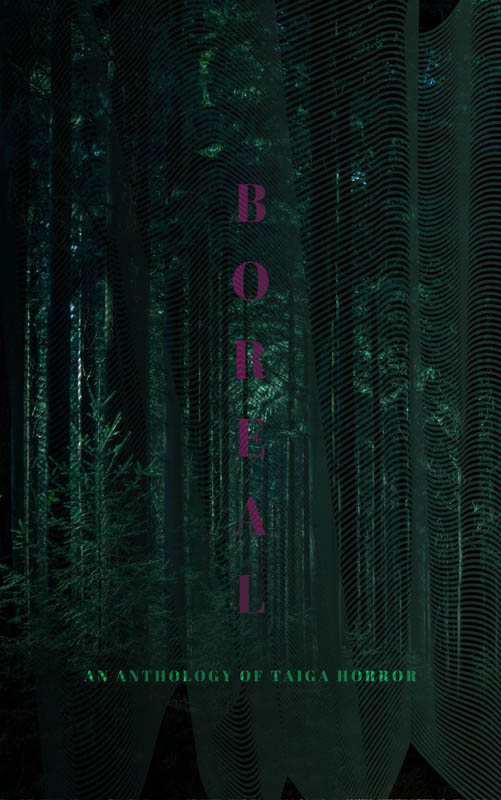
Boreal: an Anthology of Taiga Horror is a collection of twenty-two haunting tales that dwell in the deepest darkest woods and frozen wastelands, edited by Katherine Silva and including Haunted MTL’s very own Daphne Fauber. Each story has even been gifted with its very own poster, hinting at the horrors to be found within it, bestowing a beautiful visual collection as well.
The tales are varied and touch upon the environment in new and different ways, each hearkening to a sort of epiphany or raised awareness. These stories exude both dread and wonder at the smallness of our human existence in contrast to the sacred world we have isolated from, sheltering ourselves in our comfortable houses with centralized heat and everything we could possibly need or want at the ready. The taiga becomes a sanctuary outside of our own dulled awarenesses. It is a holy place imbued with powers beyond mortal human reach, a wilderness that threatens to swallow us – both whole and bit by bit, simultaneously.
The protagonists enter into this realm through ritual, superstition, longing, stubbornness, and their own hubris – yearning to survive its dangers, and to make their own marks upon it. The starkness of their surroundings harbors delicate moments that would be all too easily missed if not deliberately sought or pointed out. The softness of fur, the dappled sunlight shining through trees, the hazy clouds of breath forming in crisp air, the brittleness of bleached bone… those quiet experiences that beg to be forgotten, to lay safely sleeping just below the frozen surface, awaiting spring.
There are those who followed in the footsteps of their predecessors, seeking to escape the constraints of their parent’s and elders’ indoctrination, traditions, madness, and abuse, yearning to find their own way despite also being inextricably bound to their own pasts. There are those who just wanted to go for a walk in the woods, and remained forever changed by what they experienced. There are those who wished to impose their will upon the wilderness, their order falling to disarray, unable to make lasting impact. There are those who sought to leave behind the world of mankind, looking for oneness in the natural order of things through isolation, leaving a bit of themselves behind after being consumed by the terrors they encountered. There are those who truly found communion with the woods, became one with its wildness, and invited its spirit into their hearts to find peace, even at cost of their own lives. And then, there are the spirits themselves…
 (3 / 5)
(3 / 5)
All in all, I give Boreal: an Anthology of Taiga Horror 3.0 Cthulhus. I love existential angst so I found it to be an enjoyable read, and I appreciated the myriad manners in which the biome was explored. But there were points in which I found myself struggling to follow along, as if the words were swept up into their own wilds in ways that alienated myself as reader, as if my mere voyeurism into this otherworldly place was not enough to comprehend the subtle deviations in storytelling mannerisms fully. I suppose in some sense this seems appropriate, but at the same time, it left me feeling a bit unfulfilled, as if I had missed a spiritual connection that should have resonated more deeply.
- English (Publication Language)
- 248 Pages – 02/25/2025 (Publication Date) – Strange Wilds Press (Publisher)
Last update on 2025-01-23 / Affiliate links / Images from Amazon Product Advertising API


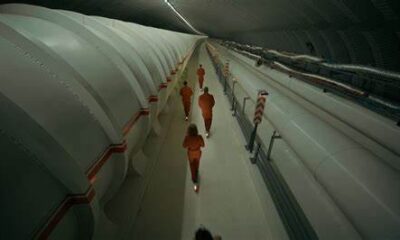

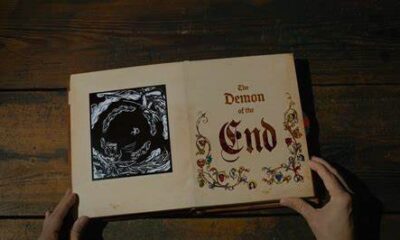



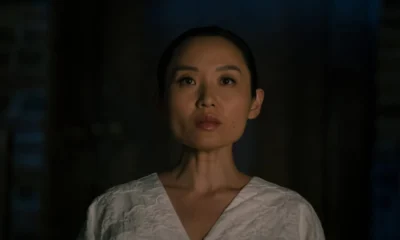

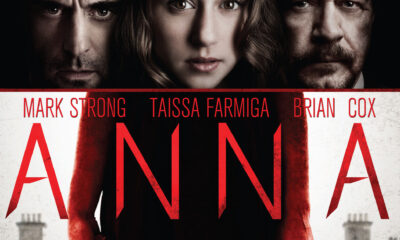

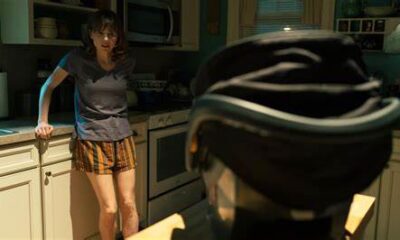

Nicole C. Luttrell
August 17, 2022 at 3:27 pm
Oh my goodness, I freaking love these books!
Jennifer Weigel
August 21, 2022 at 4:16 am
Yeah it had been a long time since I read them but they were really influential on my child self. 🙂
Did you happen to read the ones I missed? If so, please offer some thoughts. How do they compare?